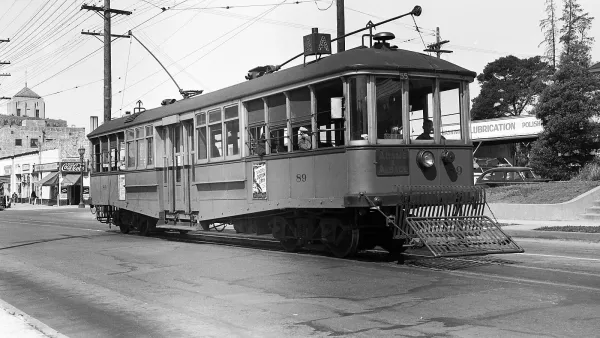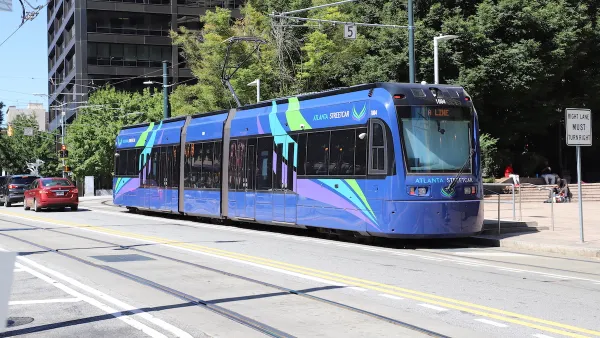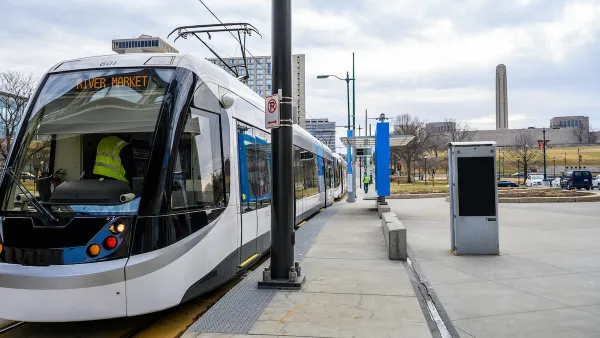For all the problems we have with today's mass transit system, at least we no longer have to deal with the smell and literal waste of the modern bus and light rail systems' predecessors: horse-drawn streetcars.
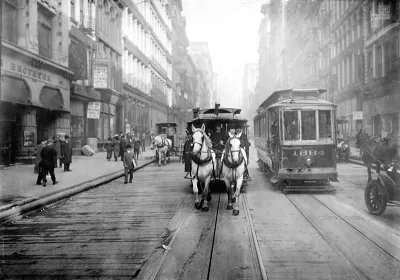
This story was originally published by Off the Grid, a Village Preservation blog. Read the original story here.
New York City summers are not easy. The heat, the humidity, and, of course, the smells. Put this together with street traffic and delayed subways, and it’s enough to make anyone dread traveling around the city during the its steamy season. But for all the problems we have with today’s mass transit system, especially this time of year, one issue we (thankfully) no longer have to deal with is manure.
New York runs on mass transit, and our neighborhoods have a unique connection to the history of mass transit. In November 1832, the Bowery saw the birth of the city’s first horse-drawn streetcar. Run by the New York and Harlem Railroad, it took commuters from the Lower East Side up to Union Square. The streetcar was seen as a major improvement from the horse-drawn omnibus, as running the cars on rails reduced the friction, so fewer horses could carry bigger loads. The horse-drawn vehicles developed from uncomfortable stagecoaches to elegantly upholstered cars styled after a passenger train car, with easier access and a smoother ride.
Another important development at this time was the standardization of advertising on mass transit. The advertising that provides a distraction when your subway is stuck in a tunnel and your phone has run out of battery is directly descended from these streetcars. As a more comfortable ride broadened the appeal of mass transit, businesses took advantage of temporarily having a captive audience to highlight their wares and services. In the 1850s, the department store Lord & Taylor was one of the first to regularly take advantage of advertising on streetcars.
New York continued its rapid growth with its population nearly doubling every twenty years through the 19th century. So while the new streetcars needed fewer horses, a city growing by area and population meant more lines and more trips.
New Yorkers were taking over 100 million trips a year with these equine-powered wonders. The streetcar horses were part of the city’s 150,000-plus-strong horse population. These noble creatures kept the city running and aided its extraordinary growth.
By the 1870s the horse-drawn streetcar was an absolute and resounding success, except for one issue. Each horse also produced a not-so-welcome daily gift: an average of over 20 pounds of manure. That meant the city had to contend with over 3 million pounds of manure on its streets every single day.
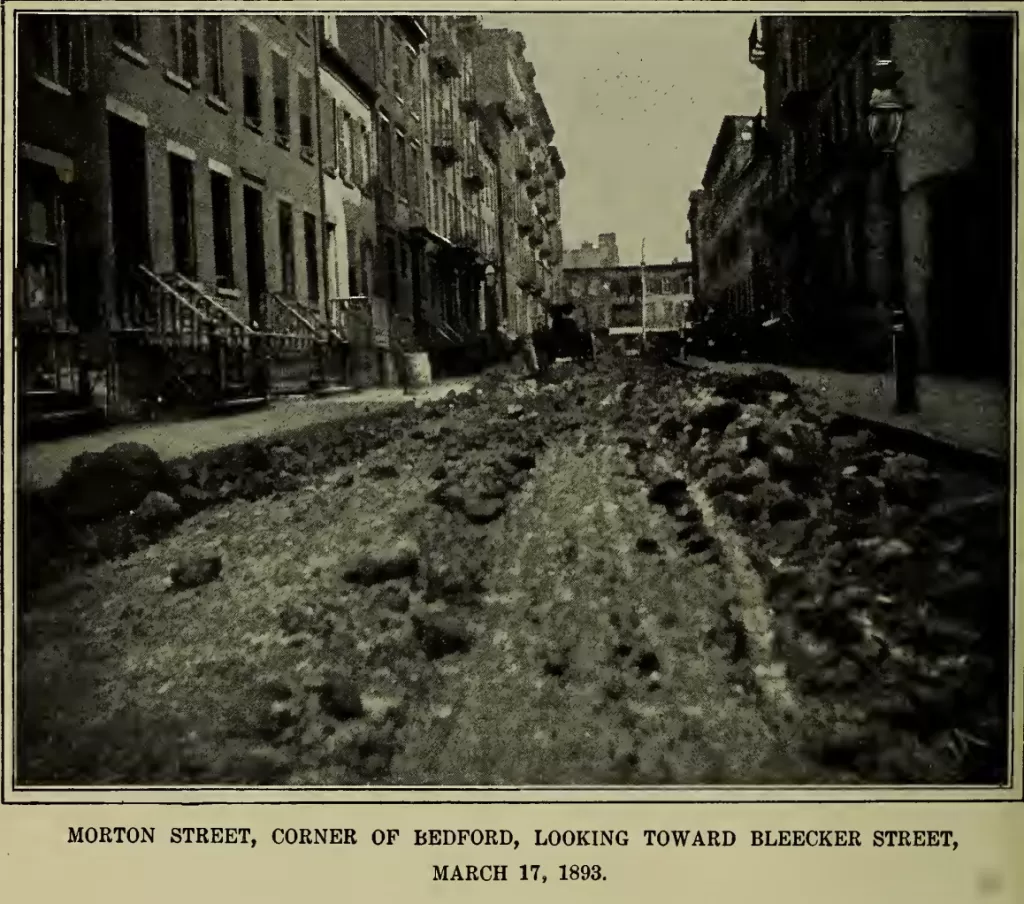
The hot summer days would dry the manure and strong breezes would whip up the odorous waste into a monstrous disease and insect-ridden storm. The issue transcended New York and had become a global one. Supposedly in 1894, The Times of London published an article on the issues cities faced in which it was predicted that if nothing was done within the next 50 years, cities would drown in 9 feet or more of manure — what some called “the Great Manure Crisis of 1894.” By the end of the 19th century, manure was such a worldwide problem for the great urban centers, it was on the top of the agenda of one of the first international urban planning conferences, held here in 1898.
It seemed nothing could be done to resolve the problem immediately. However, technology was rapidly transforming mass transit, with several new modes of transportation appearing by the end of the century. As the 20th century dawned, a combination of elevated trains, electrified streetcars, subways, and automobiles was bringing the era of horse-powered transit to an end. Eighty-four years, 8 months, and 12 days after the first horse-drawn streetcar began running along the Bowery, the last of its kind, the Bleecker Street Line, ceased operations on July 26, 1917.
The era of the horse-drawn streetcar began and ended its incredible run in our neighborhoods, leaving behind a legacy of rapid mass transit that aided our city’s growth into a global powerhouse. It also offers a reminder to give thanks — that even with city’s many issues, we no longer have to deal with mountains of manure.
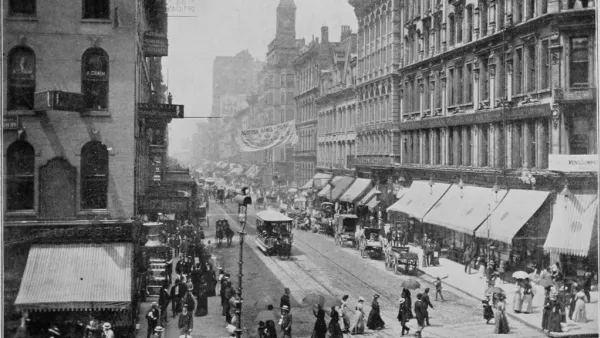
History of City Planning 2: Modern Ideas of City Planning (1900-1939)

National Parks Layoffs Will Cause Communities to Lose Billions
Thousands of essential park workers were laid off this week, just before the busy spring break season.

Retro-silient?: America’s First “Eco-burb,” The Woodlands Turns 50
A master-planned community north of Houston offers lessons on green infrastructure and resilient design, but falls short of its founder’s lofty affordability and walkability goals.

Delivering for America Plan Will Downgrade Mail Service in at Least 49.5 Percent of Zip Codes
Republican and Democrat lawmakers criticize the plan for its disproportionate negative impact on rural communities.

Test News Post 1
This is a summary

Test News Headline 46
Test for the image on the front page.

Balancing Bombs and Butterflies: How the National Guard Protects a Rare Species
The National Guard at Fort Indiantown Gap uses GIS technology and land management strategies to balance military training with conservation efforts, ensuring the survival of the rare eastern regal fritillary butterfly.
Urban Design for Planners 1: Software Tools
This six-course series explores essential urban design concepts using open source software and equips planners with the tools they need to participate fully in the urban design process.
Planning for Universal Design
Learn the tools for implementing Universal Design in planning regulations.
EMC Planning Group, Inc.
Planetizen
Planetizen
Mpact (formerly Rail~Volution)
Great Falls Development Authority, Inc.
HUDs Office of Policy Development and Research
NYU Wagner Graduate School of Public Service


























